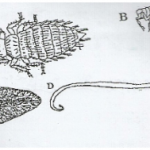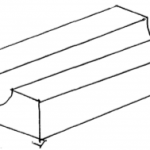KNEC KCSE Agriculture Paper 1 Question Paper – Bomet County Joint Examinations
2015 KCSE Bomet County Joint Examinations
Agriculture Paper 1
SECTION A (30 Marks)
Answer ALL the questions in this section in the spaces provided.
Give three reasons why shifting cultivation is being discouraged.
1.5 marks
State three ways in which agriculture supports agro-based industries
1.5 marks
Give two symptoms common on crops deficient in nitrogen and potassium
1 marks
Give two sources of phosphorous in the soil.
1 marks
State two functions of iron in plants.
1 marks
Distinguish between Fertilizer grade and Fertilizer ratio.
2 marks
List six factors that determine the effectiveness of a herbicide
3 marks
State three disadvantages of tillage as a method of weed control in a maize field.
1.5 marks
Name the underground structures that make each of the following weeds difficult to control:
(a)Nut grass (Cyperus rotundus)
b) Couch grass (Digitaria scalarum)
1 marks
Give one mechanical method of controlling water hyacinth.
1 marks
Give two advantages of drip irrigation over surface irrigation.
1 marks
Other than conservation of soil and water, state two other benefits of agro- forestry
1 marks
Distinguish between land subdivision and land fragmentation.
2 marks
Name the settlement schemes in Kenya at independence that:
(a)consisted of 100-acre plots surrounding houses formerly owned by White settlers
(b)were curved out from National forest
2 marks
(a) Outline the steps of making baled hay from mature Rhode grass in the field. (2 ½ marks)
(b) Give four factors that may affect the quality of the hay in (a) above (2marks)
5.5 marks
(a)What is meant by each of the following in agricultural economics? (2marks)
(i)Gross Domestic Product
(ii)Per capita income
(b) State four sources of agriculture credit to farmers (2marks)
4 marks
Give two types of labour records.
1 marks
SECTION B (20 Marks)
Answer ALL the questions in this section in the spaces provided.
Below are illustrations of three stages of a life cycle of pest that attacks maize in the field. Study them and answer the question that follows.
(a) Identify the pest (1mark)
Name the stage of the pest labelled B. (1mark)
(c ) Describe the damage done by the pest in stage C (1mark)
(d) Give three control measures for the pest while the crop is in the field (3marks)
5 marks
Illustrated below is method of grafting in citrus trees. Study it and answer the questions that follows:
(a) Identify the method 1mark)
(b) What name is given to the part labelled D (1mark)
(c ) Give two characteristic of the part labelled E that makes it suitable for use in grafting. (2marks)
(d) Name the appropriate materials for wrapping round the union at point F. (1mark)
5 marks
(a)An experiment was done on a moist soil sample as outlined below:
Weight of empty silica dish =20grams
Weight of moist soil and the dish =50grams
Weight of the soil and the dish after being placed in oven (1050C) for several hours =40grams
Calculate the percentage of moisture in the soil sample (show your workings) (2marks)
(b)(i) The soil obtained in (a) above was ignited over a Bunsen burner for several hours to remove humus. After heating and cooling in desicator severally, the constant weight of the dish and the residue was found to be 35 grams.Calculate the percentage of humus in the dry soil sample (show your workings) (2marks)
(ii)What is the role of humus in the soil? (1marks)
5 marks
The illustration below shows format a type of farm record kept in pig rearing .Study it and answer the questions that follow.
(i)Identify the record (1mark)
(ii)Sow number 10 was served on 1st February, 2015. State the expected date of farrowing (1mark)
(iii)Give three reasons for keeping the above records. (3marks)
5 marks
SECTION C (40 Marks)
Answer ANY TWO questions from this section in the spaces provided.
(a) Describe the field production of carrots for fresh vegetable market on a land that has been fallow under the following subheadings:
(i) Varieties (2marks)
(ii) Land preparation (3marks)
(iii) Planting (4marks)
(iv) Field management practices and harvesting (6marks)
(b)Explain five post harvest practices in grains before processing (5marks)
20 marks
(a)Describe the stages of chemical water treatment for human consumption (6marks)
(b) Describe four methods of draining marshy land for pasture production (4marks)
(c) State five physical methods of soil and water conservation carried out on arable land with 20% slope. Explain how each method works. (10marks)
20 marks
(a) Explain five advantages of rotational grazing of livestock (5marks)
(b)Explain ten cultural practices that are carried out in the field to control crop diseases. (10 marks)
(c ) What are the advantages of propagating crops by use of seeds? (5marks)
20 marks






